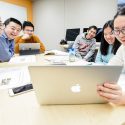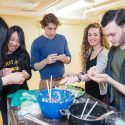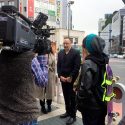Wisconsin Without Borders Marketplace makes a difference throughout globe
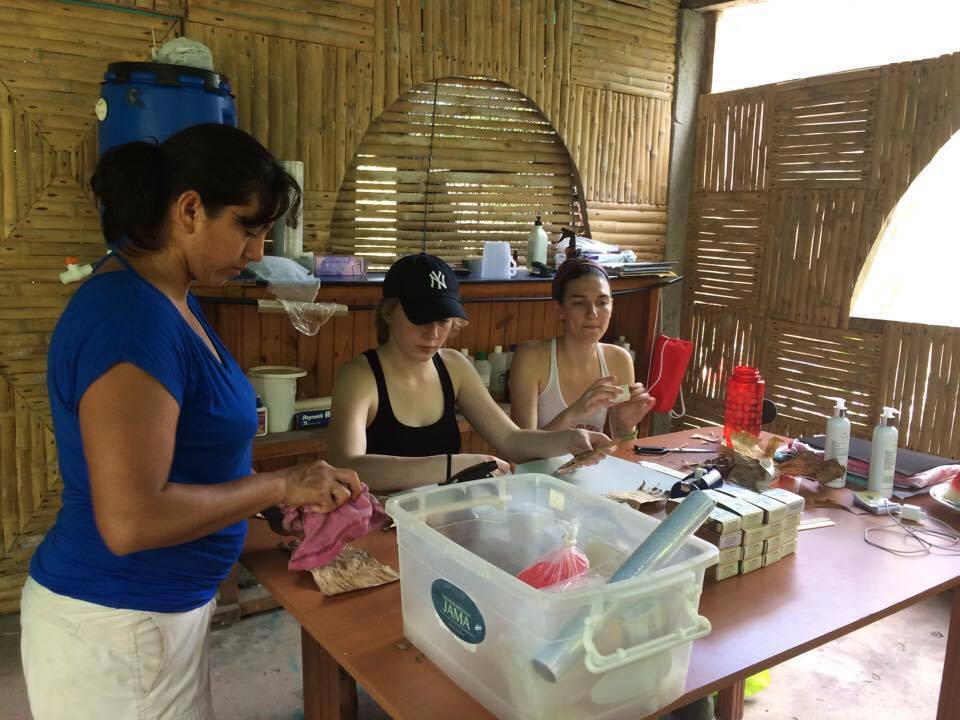
WWBM student director Jen Wagman, center, and operations coordinator Sophia Goldschmidt, right , work with the Bellinas Jabones group to make soap in Camarones Reserve in Tabuga, Ecuador. Jen Wagman/UW-Madison
Ashley Summers never imagined herself standing in the mountains of Ecuador when she first entered the Student Organization fair at the University of Wisconsin–Madison.
But nine months later, the UW–Madison student from Wauwatosa would travel to a small community outside Cotacachi to work with local artisan group, Sumak Muyo.
“It was interesting seeing how the work we do in Wisconsin translates into these small communities, and it makes a difference in these women’s lives,” Summers says, “Because that’s what our organization is really about… giving these artisans the empowerment and the skills to run their own business.”
Summers is a part of Wisconsin Without Borders Marketplace (WWBM), a student organization that collaborates with artisan groups from Mexico, Ecuador, Nepal, India and Kenya to sell their jewelry, scarves and bags in Madison. The profits are reinvested back into the artisans’ communities to support community development efforts such as education, health care and food.
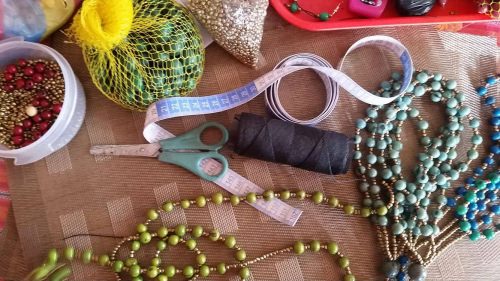
The women in Ecuador use local beads, string and other materials to make their necklaces that are sold in Madison. Jen Wagman/UW-Madison
The operations, marketing and sales for the Marketplace are primarily led by students. Janet Niewold, faculty advisor for the WWBM, believes this organization offers students opportunities to build skills in any career field they choose, whether it’s business, fashion, global health, graphic design or marketing.
“We are trying to develop economic opportunities [for students], so that they can get involved with the community using their skills,” Niewold says, “Because it’s the students’ skills that bring this project to life.”
Students begin the process by communicating with artisan groups, like Sumak Muyo, to discuss order timeline, products, questions and any other confusions. Then, the women of Sumak Muyo travel from their indigenous community, La Calera, to Otavalo to buy materials such as acai, pambil, coco, tagua nuts, beads and string if needed.
After they have their supplies, the artisans will gather at one of their homes to create the necklaces, or products for the order. When the order is finished, it will be sent to the United States, where WWBM pays for both the order and the shipping expenses. The final sale prices are calculated based on labor, time and materials.
The process can slightly vary depending on the community and what products they are creating. For example, the groups in Kenya make bags and rely on very traditional artisanship that only the older generations know, so instead of ordering products, a representative will buy bags during visits and use a lot of the funding for community development projects like a partnership building solar-powered lights with Insight Wisconsin. The products are then sold at local art fairs, in an online store and elsewhere.
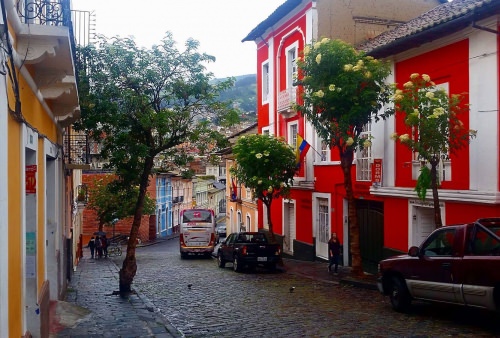
The streets in the village of Tabuga, Ecuador. Jen Wagman/UW-Madison
This interdisciplinary organization relies on various departments across the UW campus to coordinate “sustainable models for expanding product sales opportunities,” according to the website.
Jen Wagman, a student director for WWBM, explains that there are several components of the organization that students can participate in. For example, the organization’s origins derived from the global health certificate, but WWBM is a registered student organizations with the School of Business BBA program and collaborates the School of Human Ecology to analyze fashion trends. The project has financial and strategic aspects, as students can expand the marketplace and the awareness of fair trade practices in Madison.
Wagman, who’s from Verona, says “what draws student into the organization is having that true experience of what you might be doing someday,” and the ability to use their skills while making small differences in these artisans’ communities.
“Anyone can make a difference in any way, shape or form. It can be in any capacity, whether it’s in your dorm, in your apartment, in your house, and translate into these big world issues,” Wagman says, “Every day you impact so many people. Just being able to recognize that, even if you just buy a pair of earrings, you can have a big impact.”
Summers, event coordinator for WWBM, reiterated that any student who is interested in fair trade practices or applying their skills into a real business can get involved with the Marketplace. She says, “It’s a lot of work for a student organization, but you gain real skills, and it’s rewarding.”
For more information about the organization or would like to purchase their products, visit its website or email wwbmarketplace@gmail.com.
Tags: international, student life

